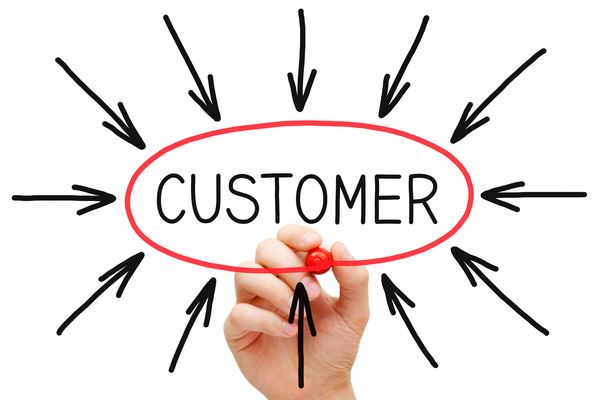Blog
Web Design Tips to Convert Your Website Visitors into Customers

When you own a business these days, it's kind of imperative to have a web presence. And the best way to establish it is to have a website. Because it is one of the most important platforms that can help you focus diligently on a major thing - converting website visitors into customers.
But how can you achieve this?
According to experts, tailoring a website to meet the specific requirements tops the marketing strategies to convert visitors into customers.
With total Internet users exceeding 3 billion in 2014, it is highly anticipated that the number of visitors coming across your business website has increased too. And each of the visitors that your website plays host to is a prospective customer.
Now the question is, what percentage of your website traffic is actually contributing to your revenues?
If your website traffic hasn't seen much of a conversion lately, then you are missing out on something really interesting. And there's a thing that you can still implement to get the best results- that's web design.
When it comes to traffic acquisition, the role of website design is immense. Even tweaking minute details can up the ante conversion-wise. Here are a few suggestions that you can utilize to experience a surge in online conversion that you always wanted.
Use Responsive Design
Responsive design is a loaded weapon that has a huge impact on the marketing strategy of a business website. With screen sizes fluctuating with the introduction of new devices every passing day, your website needs to be ready for the change.
Now, there is another reason to embrace responsive web design. Google rolled out its mobile-friendly update on April, 2015. The primary purpose of this update is to give the mobile-friendly websites a boost in the search engine results page. In addition, Google has recently announced that the number of searches performed on mobile has exceeded that of a desktop. This is all the more of a reason to make your website design responsive.
Take Starbucks, for example. If you open their website on three separate devices (a desktop, a tablet and a smartphone), you would understand what an amazing work they have done. While implementing this concept in your website, make sure that everything functions on every device and browser you have optimized it for. Once you have double-checked, check again.
Your Website Structure Can Make or Break Your Conversion Strategy
Before we dig deeper, ask yourself the following questions:
- How long does it take for your website to load?
- Is your website simple enough to help your potential customers understand what it is all about at one go?
- Does your site have a user-friendly navigation?
You will know in a second as to why I'm asking all these questions.
If your webpage takes longer than 3 seconds to load, then you are losing out on a lump sum 40% of your potential customers. Large images and videos influence the time taken for a website to load.
Once you take care of that, the comprehension quotient comes into play. The quicker a visitor understands what your website is all about, the more likely it will be to convert them. A certain study has revealed that a website is allotted about 10 seconds to leave an impression with users and tell them what it is all about, because they will leave after that. A perfect example in the case is Poppy, a company that designs home appliances. It nails the simplistic design concept to increase conversion.
A website with poor navigation features is a major reason for increase in bounce rate. And enhanced bounce rate will affect your search ranking, which, in turn, will shoot down the number of visitors of your website and hence, potential customers. A user-friendly navigation in your website can save you all that trouble.
Effective Call-to-action Buttons are the Key
It is common knowledge that for a business website to thrive, it would need a call-to-action button. This button specifies what you are offering a visitor and, therefore, you need to make it compelling. Color, size, shape and text play a major role in making your call-to-action button stand out. And its placement and positioning on the webpage is also crucial.
Sometimes it is also a great idea to tell people what they would be missing out on, if they do not click on the Call to Action button. For example, in the website Crazy Egg, below the bright Call to Action button, the small, but conspicuous “No thanks, I treat all click behavior the same” increased their conversion rate by 6%.
In addition, incorporating social media buttons affect the conversion rate too. The more your website builds an online presence, the higher are the chances for your visitors to turn into customers.
Other tidbits
Content is quite effective in making your website stand out in a crowd. Other important aspects you might want to look into are mentioned below.
- Establishing a trust quotient with your visitors is important. For example, displaying the price of a product or a service is a good idea, what would surpass that is presenting a reason as to why that price would be the best bargain for your visitor.
- Make sure that your contact information is clearly visible to anyone who visits your page. Google Maps can be of immense help as a locator.
- Creativity can take you a long way. Brand appeal could be a great strategy to start with. Think Mercedes. They don't sell cars, they sell the luxury. That's what appeals to people.
Once you have put all the essential components to use, you will find your website's conversion rate double in no time.
Image Courtesy: www.visionhelpdesk.com

Adam Frankel
Adam Frankel is President and CEO of Frankel Interactive, a leading South Florida digital agency specializing in custom websites development, ecommerce development and digital marketing. For over 15 years he's been working with businesses and government agencies to bring their organizations online in order to build brand awareness, communicate with stakeholders, generate leads and drive sales. His belief is that all businesses need to keep up with technological trends including the continual transition from desktop to mobile, search engine algorithms changes, and social media engagement. His goal is to help them implement strategies to successfully compete in an ever crowding digital marketplace. When he isn't touting the benefits of web-based marketing, he enjoys fishing and spending time on the waters surrounding Miami with family and friends.
